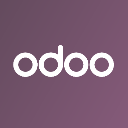Odoo vs Monday: the battle that will transform the way you manage your team's work
Running a business in 2025 is no mean feat. Between team coordination, project management, sales follow-up and dashboards, you need to be well equipped. Two heavyweights in the sector stand out: Odoo, the all-in-one ERP solution, and monday.com, the ultra-intuitive visual management platform.
☝️ But which one should you choose? Follow our guide as we compare their features, ergonomics, prices and integrations.
What is Odoo?
Overview of Odoo
Born in Belgium in 2005, Odoo grew up as a start-up that wanted to democratise ERP. 15 million users and 16,000 partners later, it has established itself as the open-source alternative to the behemoths SAP and Oracle.
You can host it yourself (free) or opt for the managed cloud (€24.90/user, all apps included).
In short, an ERP where each module (CRM, MRP, HR, e-commerce, etc.) can be clipped into the same ecosystem.
Odoo's main features
- Project management: Gantt, Kanban, Calendar, load chart, burndown chart.
- Time tracking: integrated timesheets, "start timer" widget in the task.
- Accounting, Budget & Margin: forecast vs actual cost, automatic reconciliation with cost accounting.
- Procurement: purchase requisitions, invitations to tender, receipts, quality control, batches/series.
- BI reporting: drag-and-drop dashboards, Excel/PDF exports, alerts by KPI.
- Automation: Python + Studio (no-code) workflows to create custom fields, reports and buttons.
- Multi-company, multi-currency, multi-warehouse: you can manage the factory in Shenzhen and the after-sales service in Lille in the same database.
- REST API & webhooks: connect your IoT machines or your Shopify site without going through Zapier.

Odoo
Advantages and disadvantages of Odoo
✅ Advantages
- Open-source: you modify the code, you self-host it, you retain sovereignty.
- No shadow-IT: everything is in the same data silo, no more fragmented CSVs.
- A module for each of your needs: finance, HR, marketing...
❌ Drawbacks
- First access a little austere: you spend 45 min figuring out where the "Create a project" button is hidden.
- Need a technical admin if you want to customise without Studio.
- Friendly French-speaking community, but smaller than the monday.com galaxy.
What is Monday?
Overview of Monday
In 2012 in Tel Aviv, three friends wanted to "make work as easy as Facebook". The result: monday.com, a 100% cloud platform that looks like a digital whiteboard.
180,000 teams use it, including Carrefour, Uber and Renault. Everything is designed to enhance the user experience: drag and drop, smiley faces, colour, three-click automation, no on-premise options, just high-speed no-code.
Monday's main features
- Boards: Kanban, Gantt, Calendar, Timeline, Workload, Form.
- Automations: 200+ templates
- Dashboards: pie chart widgets, gauges, graphs, OKR targets.
- Docs (Notion type) integrated into boards.
- Mobile apps: push notifications, barcode scanning, before/after photos.
- Native integrations: Slack, Jira, Gmail, Zoom, Microsoft Teams, HubSpot, Salesforce.
- Public forms: one link and your customer can create a project request.
- Modern GraphQL API, webhooks, JavaScript SDK.

monday.com
Advantages and disadvantages of Monday
✅ Advantages
- Express onboarding: 15 minutes and your first board is ready.
- Gamification: colours, smileys, "tick" sound when you move a card.
- 24/7 support in French, chat in less than 2 minutes.
Disadvantages
- No native purchasing or accounting module, only via Zapier.
- Linear price: +€10/month per user, it goes up fast.
- Cloud only: impossible to install on your NAS.
Odoo vs Monday: compare features
| Key functionality | Odoo | Monday |
| Complete CRM | native, pipeline, quotes, invoicing | via "Sales CRM" template |
| Accounting & VAT | double entry, FEC, SEPA | ❌ |
| Stocks & Purchasing | multi-warehouse tracking, rules | ❌ |
| Project management | Gantt, tasks, timesheets | Kanban, Gantt, dashboard |
| E-commerce | native site, payment, delivery | ❌ |
| HR & Payroll | forms, holidays, recruitment, payroll | ❌ |
| Automation | action server + Studio | no-code, 200,000+ automations/month |
| API & development | Full REST, source code | REST & GraphQL, webhooks |
| Mobile version | Native iOS/Android | Native iOS/Android |
| On-premise mode | ✅ | ❌ |
Focus on task and dependency management
Odoo
- You create a task, add "blocked by" / "blocks" dependencies.
- A stopwatch is integrated: click, you start, you pause, you invoice.
- Filter by team, client, stage, priority and project margin.
Monday
- You draw a visual arrow between two cards → instant dependency.
- The automation "if task A is delayed → shift task B" is done in 3 clicks.
- Colour the cards according to the workload, the deadline or your mood.
Focus on budget & margin monitoring
Odoo
- You enter the forecast cost per task, and Odoo calculates the actual cost using timesheets and purchase prices.
- The margin report is generated automatically, so you know whether your project is profitable before you close the invoice.
Monday
- You create a "Budget" column and an "Actual cost" column.
- You use a formula, but you have to re-enter the costs from QuickBooks or Excel.
- Ideal for marketing projects where margin is not the main issue.
Focus on procurement and the supply chain
Odoo
- You launch a purchase request from the project task.
- The supplier receives a portal to confirm prices and lead times.
- On receipt, you scan the barcode and Odoo updates the stock and the real cost of the project.
Monday
- Nothing native. You can create a "Purchasing" board, but you duplicate the data.
- You'll end up integrating Google Sheets or Airtable... and losing traceability.
Odoo vs Monday: compare prices
| Plan | Odoo Cloud | monday.com |
| Free |
|
Up to 2 seats
|
| Basic | 9 € / user / month :
|
|
| Standard / Standard | 24.90 / user / month :
|
12 / user / month :
|
| Pro | 19 € / month / user :
|
|
| Custom | 37.40 / user / month :
|
On quotation :
|
Odoo vs Monday: which interface is more intuitive?
| Criteria | Odoo | Monday |
| Getting started | 2 h (tutorial + Studio) | 15 min (drag & drop) |
| Design | ERP interface, a little austere | Candy colours, emoticons |
| Customisation | No-code studio + Python | Unlimited columns, colours, icons |
| Mobile app | Complete but dense | Fluid, ultra-fast push notifications |
| Accessibility | WCAG 2.1 | WCAG 2.1 |
Odoo vs Monday: compare integrations
| Integration | Odoo | Monday |
| Slack | Via third-party app | Native |
| Jira | Via API | Native |
| QuickBooks | Native module | Zapier |
| Shopify | Official connector | Zapier |
| Google Drive | ⭐⭐⭐⭐ | ⭐⭐⭐⭐⭐ |
| Open API | Full REST/OData | Modern GraphQL |
When to choose Odoo or Monday?
Typical use cases for Odoo
- You are a purchasing manager in the textile industry: you want to link customer orders, requirement calculations, invitations to tender, receipts and invoices in a single flow.
- You are an industrial entrepreneur with 0-100 employees. You're starting from scratch, and you know you're going to need accounting, stock management and HR later on.
- You're aiming for compliance (ISO 9001, batch traceability) without blowing your licence budget.
Typical use cases for Monday
- You're a SaaS project manager: your team lives in Slack + Jira + Figma, you want a colourful table shared with marketing and the customer.
- You're a scale-up with 50-200 people. You already have QuickBooks, HubSpot and Zoom and you don't want to change everything.
- You need to prove the value of a project in 1 week (board ready, automations activated, sponsor delighted).
Conclusion
👉 Want to rule the supply-chain and have a single source of truth? Odoo is your future ERP-monster.
👉 You want to launch a project with a snap of your fingers and impress your CEO with a rainbow dashboard? monday.com is your best ally.
Our advice: test both for free, but ask yourself the question on the day: "In 18 months' time, will I need an invoicing or purchasing module? "If so, Odoo will cost you less in the long run. If not, monday.com will make you shine from tonight.
FAQ: Odoo vs Monday
Which software is best suited to small businesses?
monday.com if your company employs fewer than 15 people and you don't have a purchasing flow. As soon as you manage stock or accounts, Odoo becomes more relevant.
Which is more secure?
Both are ISO 27001 and RGPD. Odoo offers on-premise if you want to keep the data in-house.
Can I migrate from Monday to Odoo later?
Yes, Odoo provides a CSV/API migration wizard. Allow 2-5 days and a small data recovery budget.
Does Monday manage accounting?
No. It connects to QuickBooks, Xero or FreshBooks via Zapier. If you want invoice + stock + project in the same screen, Odoo is simpler.
Is Odoo free?
Open-source is. You install it on your server, you just pay for support or third-party modules.
Article translated from French